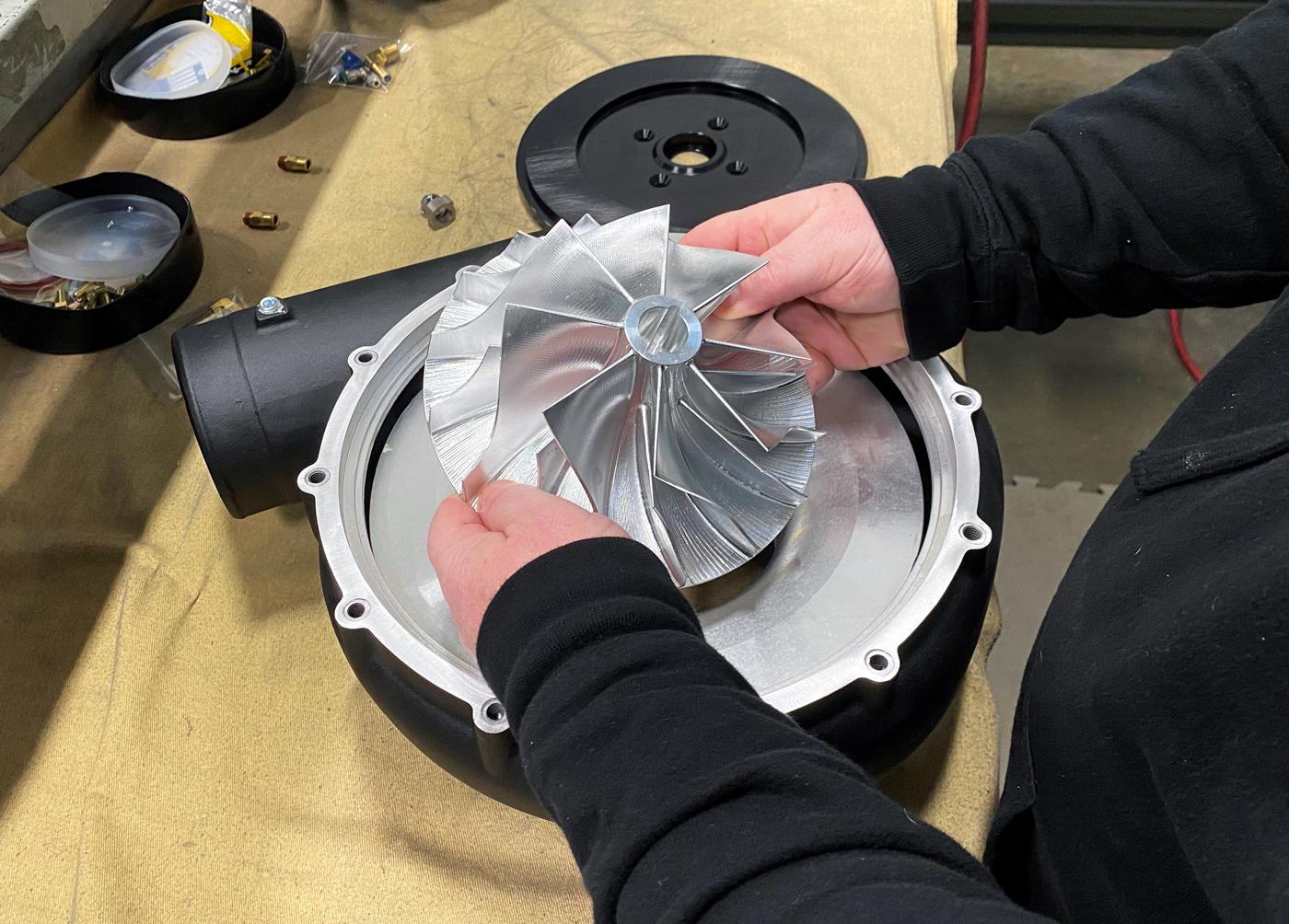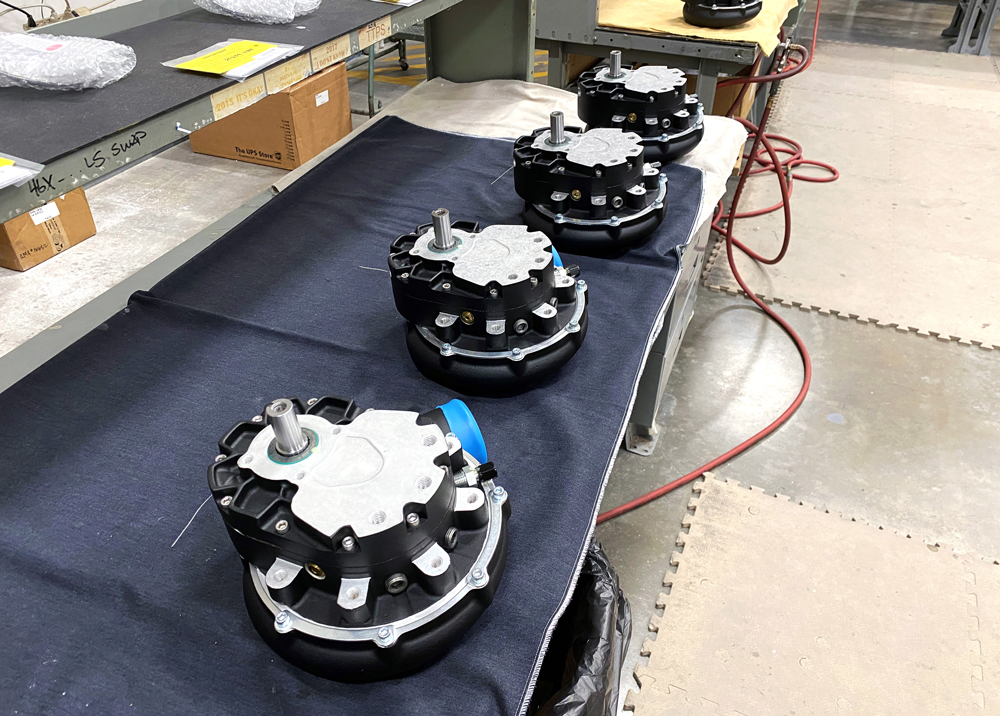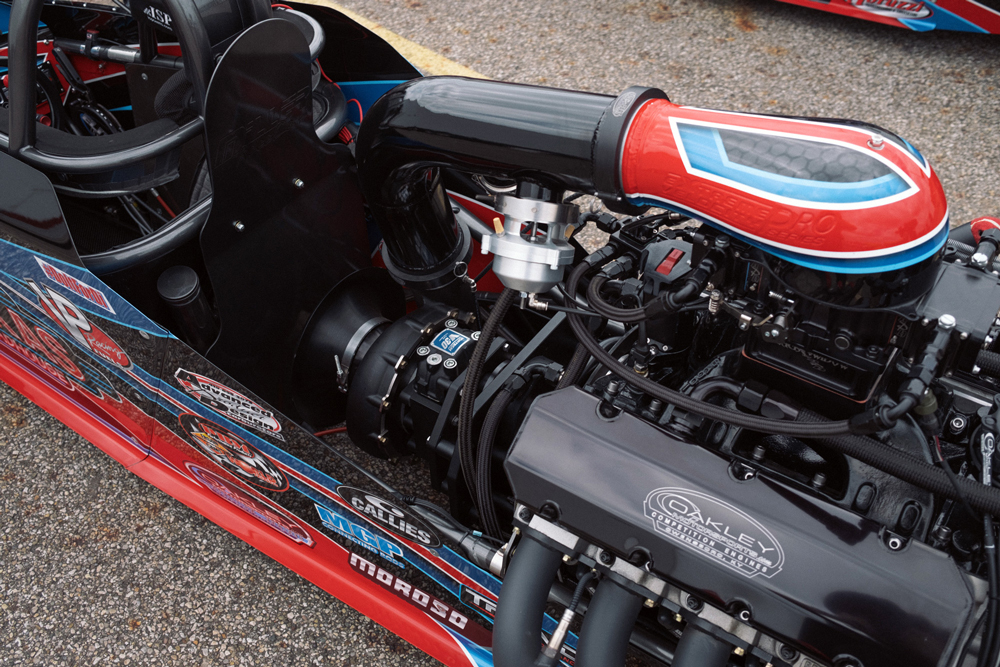PRI Tech: Centrifugal Supercharger Setup

Bigger is not always better when selecting a centrifugal supercharger. A supercharger that is too big for the engine will deliver too much air, causing boost lag at low rpm.
Horsepower goals, engine size, and type of driving are just some of the factors to consider when choosing one of the most popular power adders—a centrifugal supercharger.
We all know superchargers provide additional power and performance by supplying more air—or “compressed,” denser air—to the engine. In fact, they are the power adder of choice for countless competitors and enthusiasts across the racing spectrum.
Among their primary benefits is ease of installation, i.e., relatively simple intake and discharge ductwork compared to other power adders.
There are also multiple types to choose from, including Roots, twin-screw, and centrifugal. For this piece, however, we’ll focus on the latter.
Centrifugal superchargers, also known as compressors or blowers, are belt-driven, or in race applications, direct gear driven units powered by the engine’s crankshaft. Supported by brackets, they can be mounted in multiple locations across the engine compartment.
This design element means the unit doesn’t have to sit directly on top of the engine, which in turn helps minimize under-hood temperatures, as well as compressor discharge temps. It also doesn’t require you to re-configure or replace the engine’s intake manifold, which has gone through the timely process of OEM-level R&D to determine the designated runner length.
Centrifugal superchargers have a variety of different gear case options depending on the application, including:
• Configurations according to street or race engine heads
• Standard or heavy-duty bearings
• Compressor stages (impeller and volute sizes)
Thus, it is important to choose the right supercharger head unit for a vehicle’s engine size, horsepower goals, and type of driving. Let’s examine a few of these factors in more detail.
Pursuing HP Goals (Not ‘Boost’ Or ‘PSI’ Numbers)
Consider that boost is a measurement of airflow restriction or backpressure at the intake manifold. Aftermarket products like high flow heads, headers, cams, or intakes will have different boost outcome numbers associated with the same supercharger. Thus, it is unwise to use boost targets as a determining factor in deciding which blower unit is right for the application.
By zeroing in on a horsepower-based goal instead, you can build your current engine—or select another one—to achieve those goals in conjunction with the properly sized supercharger head unit.
For reference, street supercharger head units typically support “up to” a set range of horsepower levels. These ranges tend to follow certain increments:
• 525
• 775
• 950
• 1,000
Race supercharger head units, on the other hand, support “up to” horsepower increments in the following:
• 1,200
• 1,400
• 1,500
• 1,600
• 1,700
• 2,000
• 3,500
Consider: most engine builds’ inevitable fate is gradually increasing horsepower. Thus, it is wise to consider both future and current power goals when selecting a centrifugal supercharger.
Using Displacement To Select Blower Size
In general terms, a supercharger that is too big for the engine will deliver an overabundance of air and cause boost lag at low rpm. Conversely, one that is too small won’t be able to supply enough air for the engine to run efficiently and will nose over at higher rpm.
For optimal performance, a supercharger’s impeller speed must be within a certain rpm range. This range is dependent on the supercharger’s size, the engine’s size (in cubic inches), and the engine’s power level. When a blower is appropriately matched to the engine, its benefits include lower discharge temperatures, increased air charge density, and extended unit longevity.
Engine Build Levels (Forged Internals vs. Stock Internals)
Many of today’s modern engines are capable of making more power than when they came from the factory. Models such as the Chevy LS, Dodge HEMI, or Ford Coyote can support a decent amount of additional horsepower—typically up to a 40–50% increase in horsepower—before requiring internal upgrades.
Most supercharger manufacturers offer 50-state CARB-legal supercharger kits that stay within these 40–50% incremental horsepower boundaries, providing a safe and long-lasting product.
Older engines can certainly benefit from upgraded forged internals to avoid potential engine failures. But like anything performance-related, it’s all based on matching the intended horsepower goal to the application.
Supercharger Pulley Size Changes’ Effects On Boost & HP
These can vary by application, but for every .10-inch you go down in supercharger unit pulley size, you gain about 1 lb. psi/boost. Conversely, for every .10-inch you go up in supercharger unit pulley size, you lose about 1 lb. psi/boost. Typically, you will have a starting baseline reference from the stock supercharger pulley that came with the kit. There will always be sizing differences depending on the application.

Consider that when changing either the supercharger pulley or crank pulley, you must be careful not to overspin the blower’s max rpm limit. This can be determined by using an impeller speed calculator and plugging in various pulley sizes and shift max rpm’s. For those savvy with numbers, we provide the relevant formula below:
Crank Pulley Size x Max rpm x Blower Step up Ratio / Supercharger Pulley Size = Impeller Speed
Further information can usually be found on a manufacturer’s website.
Engine Oil Fed vs. Self-Lubricated
Most street and street/strip centrifugal supercharger head units are offered in both engine oil-fed and self-lubricated variants. Race-specific supercharger head units are only offered as engine oil-fed units.
Engine oil-fed units are required for serious drag racing, road/track racing, drifting, or any other type of driving that subjects the car to high G-force levels. One notable benefit of oil-fed is the existence of an oil feed line injector that squirts oil directly onto the unit’s gears for constant lubrication. This method helps keep the supercharger bearings and gears consistently at a cooler temperature.
Self-lubricated units are great for most vehicles where street driving or milder street/strip or sport touring is the intended use. Supercharger head units that are self-lubricated also have a simpler/easier installation, as there are no oil feed or drain lines to run.
Straight-cut (Loud) Gears vs. Helical-cut (Quiet) Gears
There are two options for gear sets in centrifugal superchargers gearcases. The first are straight-cut, also known as “loud” gears, whose design results in greater friction (thereby making more noise) across the gear mating surfaces. By contrast, helical-cut gears are labeled as “quiet” gears, as their layout utilizes a helical curvature to mesh gears more seamlessly.

There really is no performance advantage or disadvantage to using one or the other—it’s more a preference on the overall sound the supercharger makes. Some supercharged vehicle owners prefer a quieter operating unit; others want the inherent mechanical sounds of the gears to be louder.
Always Consult The Professionals
While the above provides general knowledge and helps explain some of the options and distinctions between different centrifugal superchargers, vehicle owners planning a build should consult an experienced, reputable engine builder, installation shop, tuner, and perhaps most importantly, their supercharger manufacturer, as these resources can help prevent mistakes while offering guidance on the right parts for the vehicle and engine combination—the first time. P
Brian Cox is a marketing manager at Vortech & Paxton Superchargers in Channel Islands, California, and has been in the automotive industry for more than 25 years. Starting at Hot Rod magazine and Petersen Publishing in 1997, he has been involved in most facets of the aftermarket industry, including sales, publishing, PR, editorial, and marketing. His lifelong hobbies include dirt bikes, off-roading/4x4s, and muscle cars.
 MEMBERSHIP LOGIN
MEMBERSHIP LOGIN JOIN PRI
JOIN PRI


